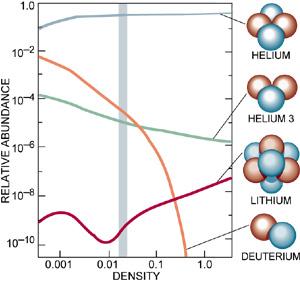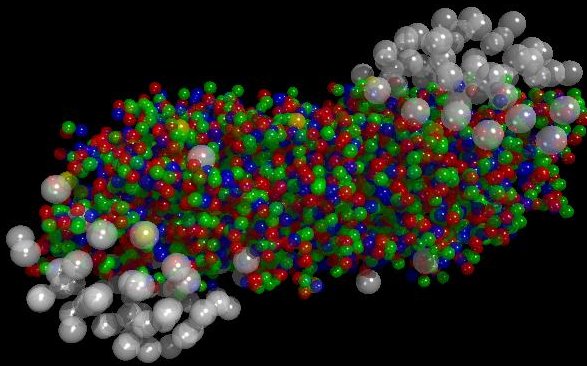

DENSITY OF NEUTRONS AND PROTONS in the universe determined the
abundances of certain elements. For a
higher-density universe, the computed helium abundance is little different, and the
computed abundance of deuterium is
considerably lower. The shaded region is consistent with the observations, ranging from an
abundance of 24 percent for helium
to one part in 1010 for the lithium isotope. This quantitative agreement of theory and
observation is a prime success of the big
bang cosmology.

a quark-gluon plasma
Our understanding of how the universe was created, which was previously unverified theory for any point in time before the formation of ordinary atomic nuclei, about three minutes after the Big Bang, has with these results now been experimentally tested back to a point only a few microseconds after the Big Bang.